A customer wants to be able to initiate a return connection to an internal host from a specific
Server.
Which NAT feature would you use in this scenario?
Your customer needs embedded security in an EVPN-VXLAN solution.
What are two benefits of adding an SRX Series device in this scenario? (Choose two.)
How does an SRX Series device examine exception traffic?
Which encapsulation type must be configured on the lt-0/0/0 logical units for an interconnect
logical systems VPLS switch?
You are experiencing problem with your ADVPN tunnels getting established. The tunnel
and egress interface are located in different zone. What are two reasons for these problems? (Choose two.)
Exhibit:
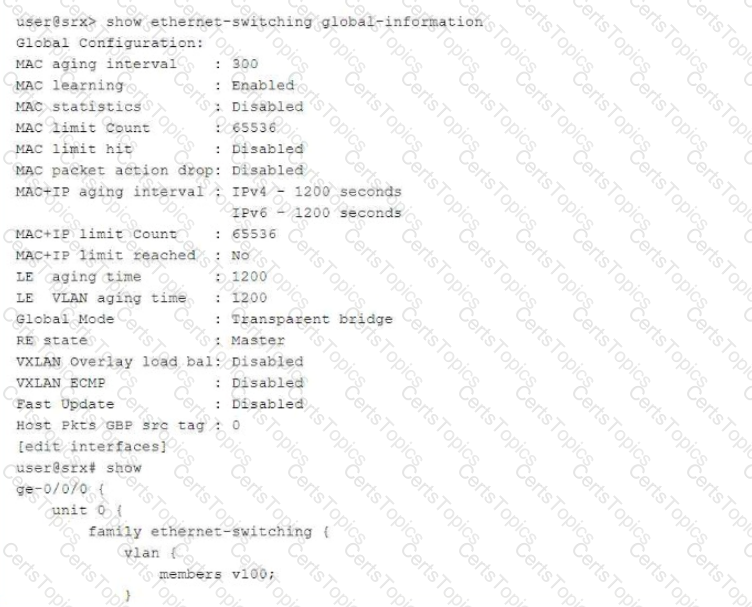
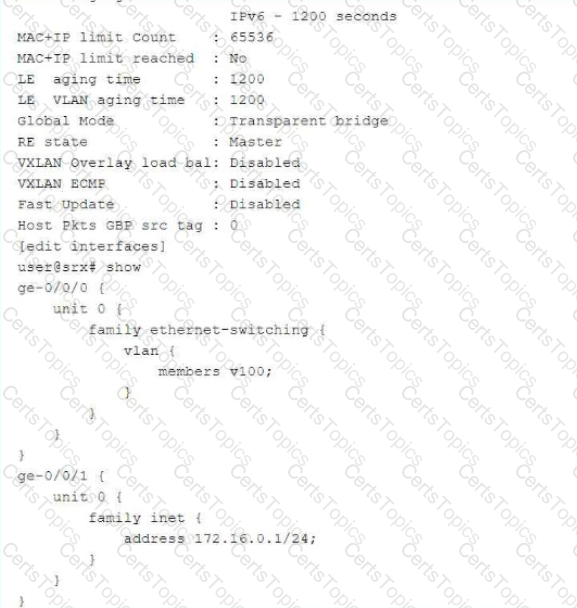
In which mode is the SRX Series device?
You are deploying threat remediation to endpoints connected through third-party devices.
In this scenario, which three statements are correct? (Choose three.)
Which two statements are true regarding NAT64? (Choose two.)
Which three statements about persistent NAT are correct? (Choose Three)
Click the Exhibit button.
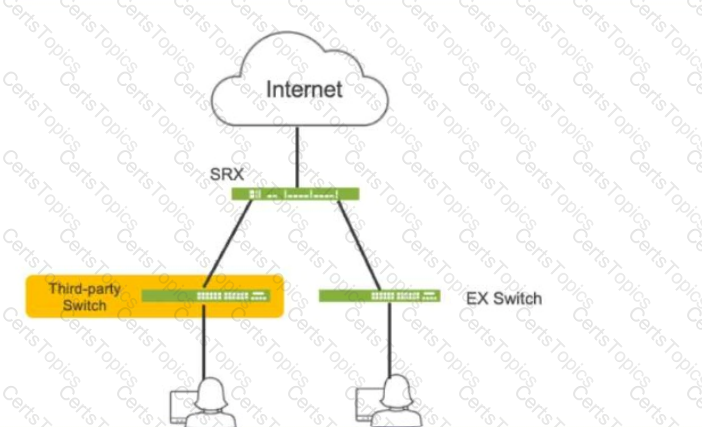
Referring to the exhibit, which three actions do you need to take to isolate the hosts at the switch port level if they become infected with malware? (Choose three.)
You are deploying IPsec VPNs to securely connect several enterprise sites with ospf for dynamic
routing. Some of these sites are secured by third-party devices not running Junos.
Which two statements are true for this deployment? (Choose two.)
The exhibit shows part of the flow session logs.

Which two statements are true in this scenario? (Choose two.)
You need to generate a certificate for a PKI-based site-to-site VPN. The peer is expecting to
user your domain name vpn.juniper.net.
Which two configuration elements are required when you generate your certificate request? (Chose two,)
Click the Exhibit button.
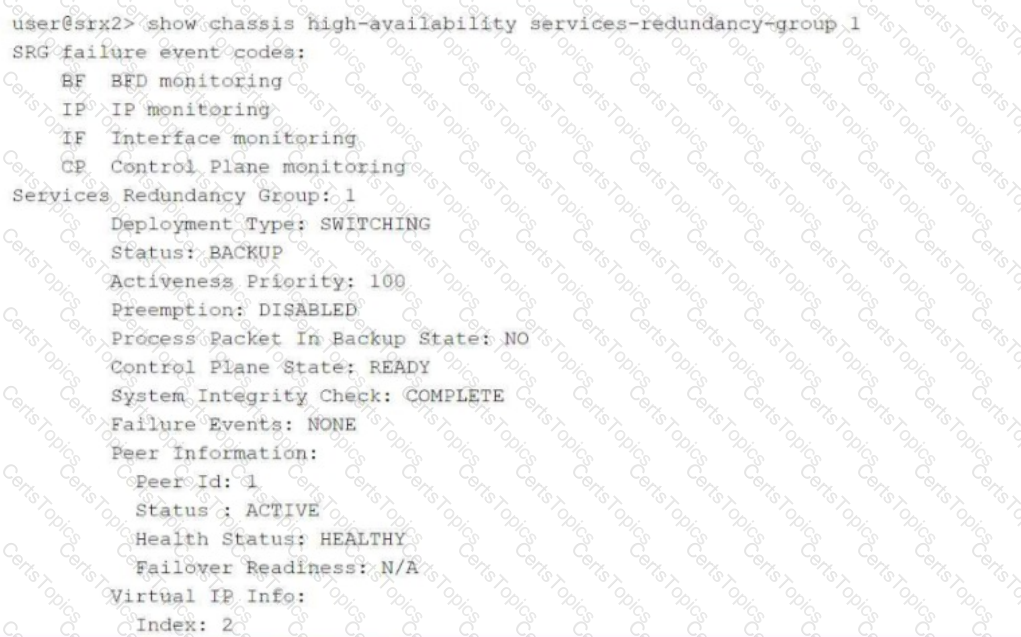
Referring to the exhibit, which two statements are correct? (Choose two.)
You are asked to select a product offered by Juniper Networks that can collect and assimilate data from all probes and determine the optimal links for different applications to maximize the full potential of AppQoE.
Which product provides this capability?
Your IPsec tunnel is configured with multiple security associations (SAs). Your SRX Series device supports the CoS-based IPsec VPNs with multiple IPsec SAs feature. You are asked to configure CoS for this tunnel.
Which two statements are true in this scenario? (Choose two.)
A company has acquired a new branch office that has the same address space of one of its local networks, 192.168.100/24. The offices need to communicate with each other.
Which two NAT configurations will satisfy this requirement? (Choose two.)
You have configured the backup signal route IP for your multinode HA deployment, and the ICL link fails.
Which two statements are correct in this scenario? (Choose two.)
Which two statements about transparent mode and Ethernet switching mode on an SRX series
device are correct.
You have deployed two SRX Series devices in an active/passive multimode HA scenario.
In this scenario, which two statements are correct? (Choose two.)
The SRX series device is performing static NAT. you want to ensure that host A can reach the
internal webserver using domain name.
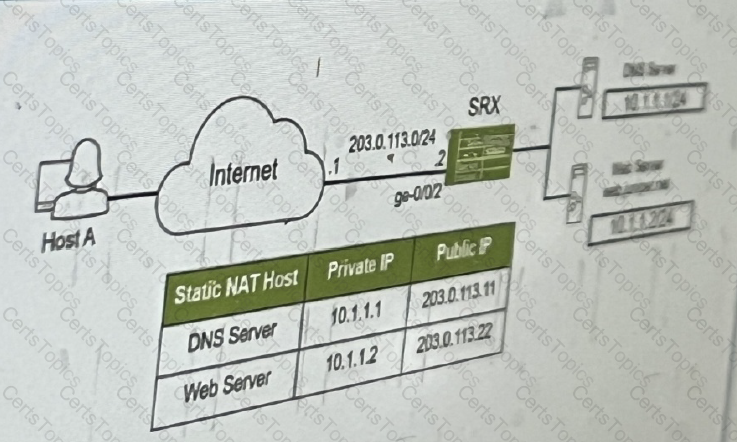
Referring to the exhibit, which two Junos features are required to accomplish this task? (Choose two.)
You want to create a connection for communication between tenant systems without using physical revenue ports on the SRX Series device.
What are two ways to accomplish this task? (Choose two.)
You are configuring an interconnect logical system that is configured as a VPLS switch to allow two logical systems to communicate.
Which two parameters are required when configuring the logical tunnel interfaces? (Choose two.)
Exhibit:
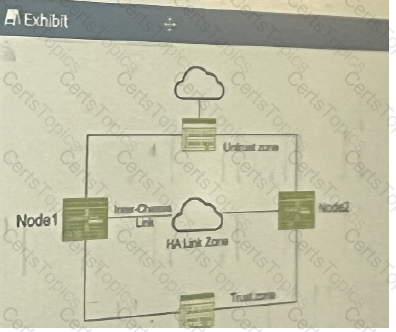
You have deployed a pair of SRX series devices in a multimode HA environment. You need to enable IPsec encryption on the interchassis link.
Referring to the exhibit, which three steps are required to enable ICL encryption? (Choose three.)
Exhibit:
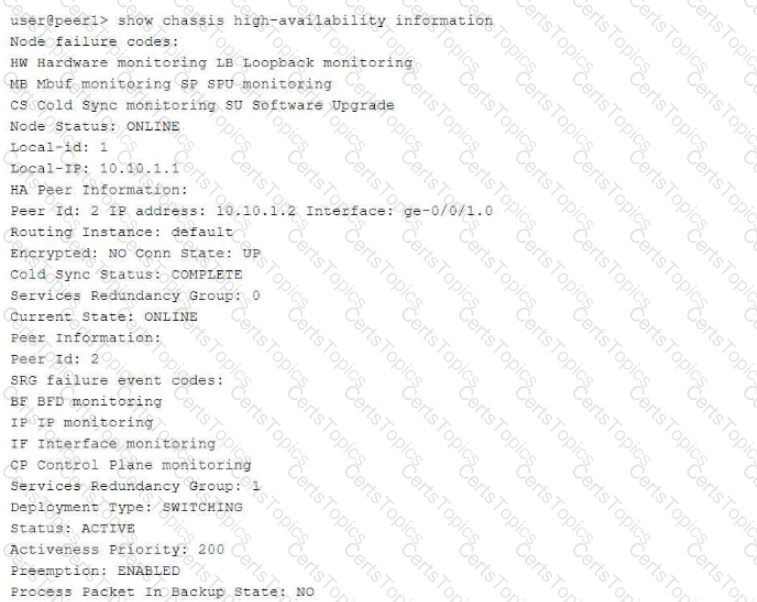
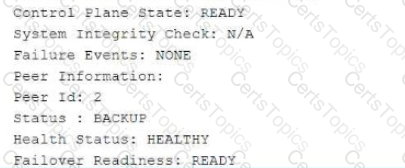
Referring to the exhibit, which statement is true?
Which two statements are correct about DNS doctoring?
Exhibit:
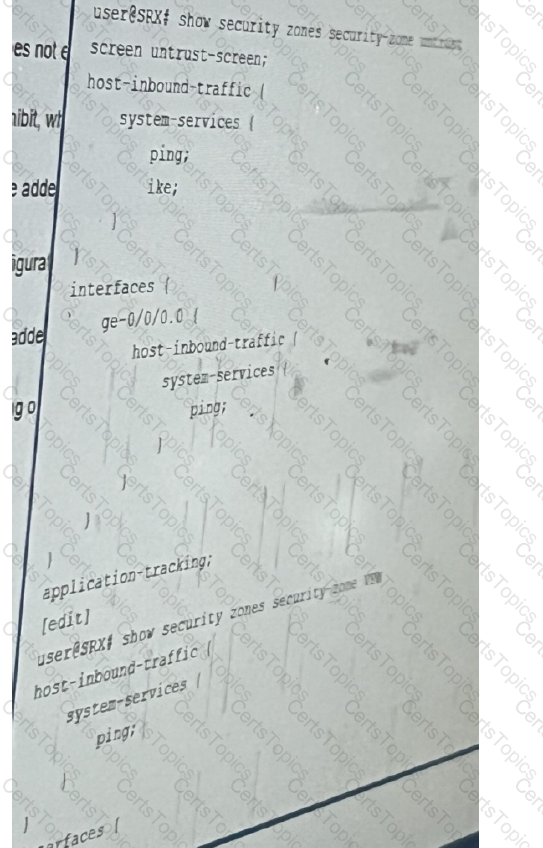
The Ipsec VPN does not establish when the peer initiates, but it does establish when the SRX
series device initiates. Referring to the exhibit, what will solve this problem?
Which two statements are true when setting up an SRX Series device to operate in mixed mode? (Choose two.)
You are asked to set up advanced policy-based routing.
Which type of routing instance is designed to support this scenario?
Which two statements are correct about the ICL in an active/active mode multinode HA environment? (Choose two.)
You are attempting to ping an interface on your SRX Series device, but the ping is unsuccessful.
What are three reasons for this behavior? (Choose three.)
Referring to the exhibit, you are assigned the tenantSYS1 user credentials on an SRX series
device.
In this scenario, which two statements are correct? (Choose two.)
You are using trace options to troubleshoot a security policy on your SRX Series device.

Referring to the exhibit, which two statements are true? (Choose two.)
What are three configurable monitor components for a service redundancy group? (Choose two)